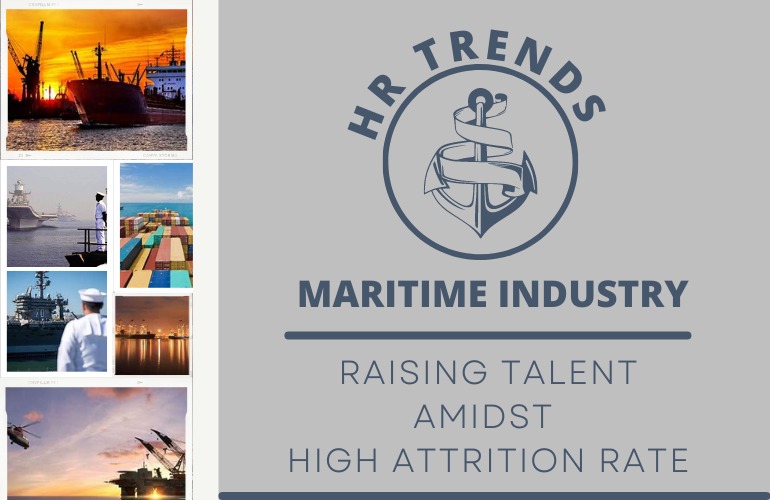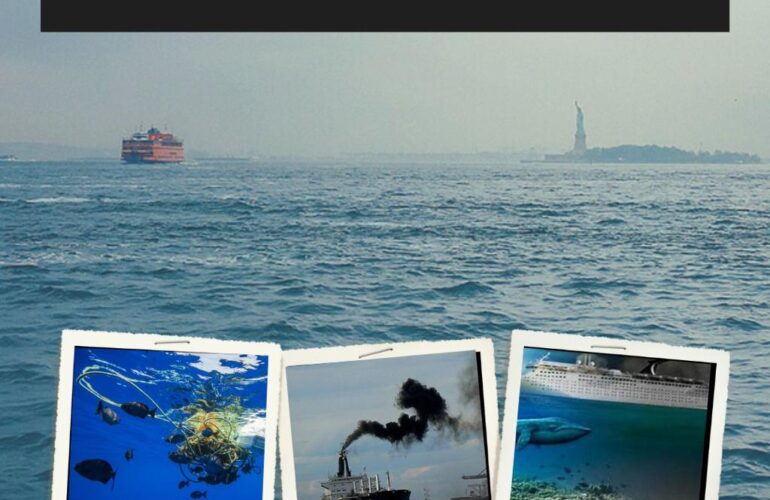Existing social, political, and geographical boundaries have almost vanished in the previous decade, resulting in extraordinary changes in the way industries function around the world. The need to attract and retain high-performing personnel has grown as a result of the significant globalisation of economic activity, as people may be the only remaining source of competitive advantage.
The quality of an organization’s talent, enthusiasm, and devotion are the only things that are practically difficult to duplicate. Strategically, having the proper talent in key positions is critical because they can make a difference in revenue, innovation, creativity, and organisational performance.
The desire to retain talent has prompted a shift in perspective from the old human resource view of people as an expense to human resource management as a way of ensuring organisational success.
These changes in global operating conditions have had an impact on the maritime industry as well. Globalization has added to the issues of workforce management, which are already global in character with commercial activities, technical management, crewing, registration, and ownership distributed around the globe.
The worldwide marine industry is facing a skilled labour deficit, which is expected to worsen as the global economy emerges from recession after pandemic. The shortage is also due to a high rate of attrition among human resources.

Let’s know some of the reasons behind it.
- Lack of Career prospects: Lack of career possibilities, in particular, is a major factor in high turnover among personnel in the traditional marine business, since uncertainty about future employment demotivates and deflates their motivation to complete the entire training programme.
The following are the main reasons for leaving: spending a long time away from home and family, cultural differences posing challenges, and isolation or loneliness among people.
- Poor HR practices of employers: One of the causes for the difficulty in retaining officers may be poor human resource practises. Employers in the maritime business, for example, tend to stratify their employees depending on their geographic origin or ethnic background, and this has a significant impact on staff promotion onboard vessels, with some nationalities dominating others.
As a result, for some nationalities, the lack of opportunities to advance up the hierarchical ladder onboard to become a senior officer prompts them to seek land, or they may stay at sea but be dissatisfied, but the former is more frequent.
- Generational Issues: Another key element that influences the progressive mobility of ship officers to landside professions and helps to explain why retaining seafarers is difficult is the age difference. In the maritime sector, there are disparities in expectations between younger and older generations.
Many of the older generation of mariners claim that they were drawn to the sea by a thirst for adventure after hearing stories of faraway locations from their forefathers.
As a result, the age when seafaring was considered a career for life has passed. The expectations of the younger generation of ship officers differ from those of their forefathers, and they must be carefully examined before putting them on the same platform in order to produce a good working environment.
- Workplace health and safety issues: Workplace health and safety issues are also a significant aspect in people’s working lives, and there are numerous worries in this area that could influence their decision to shift to another field. Due to an excessive workload and a lack of training on land, concerns about human resource health have long been an issue.
The ship has remained one of the most dangerous workplaces due to suboptimal labour conditions, insufficient remunerations and criminalisation of seafaring. This prompt people to leave.
- Micromanagement: Because the maritime sector have limited number of people, the manager is frequently in charge of everything. He gives no liberty to other staff working on the project and controls every decision, causing job stress and little opportunity for advancement.

Despite the fact that marine industry companies use a variety of measures to reduce attrition and improve retention, the impact is minimal due to several gaps and inadequacies. As previously stated, shipping sector employers’ retention methods are limited in a number of ways as compared to other industries for a variety of reasons. As a result, a refocus is required. And below are the ways which it can be improved and can be maintained skilled employees.
- Employee Engagement: Engagement has been demonstrated to be positively associated with organisational commitment, negatively associated with turnover, and clearly linked to retention. Only 13% of employees worldwide are engaged at work, according to Gallup’s 142-country research (2013); the majority (63%) are ‘not engaged,’ and 24% are ‘actively disengaged.’
Engaged employees add discretionary effort to the workplace, connect effectively with their boss and role, and are a big asset in reaching corporate goals, it is now well understood and appreciated. Highly engaged employees are less likely to depart. More than two-thirds of employees want to stay with their current employers for the next year, owing to an increase in engagement.
- Succession planning and Career development: Succession planning is an important part of talent management that should be at the heart of any successful organization’s recruitment policy. It entails efficiently tracking, guiding, and training individuals for future employment.
Given the considerable time it takes for someone to enter the business and become an officer, various problems with on-board training, organisational culture, and career advancement can lead to the squandering of potential talent. Employers of marine will be better positioned to meet future increases in labour demand during periods of economic growth and will be able to reduce attrition by implementing succession planning techniques.
- Providing proper work environment and training: There are the most number of companies does not give proper training by citing the reason of poaching. So, they hire more traditional and non-traditional countries to reduce cost. It creates no sense of company culture and left with no motivation to work in hazardous field.
Adding to it, less safety work environment makes their situation more strenuous to cooperate with. By giving proper work environment and proper industrial training, attrition can be reduced. And it will improve retention rate.
- Proper recruitment of human resources: Maritime businesses use recruitment as part of their crewing strategy to ensure a steady flow of workers. Due to the underlying cost effectiveness and worldwide reach afforded by crew supplying organisations, the indirect approach has tended to grow increasingly popular among employers.
Lack of collaboration between employers and training institutes, poor recruitment practises among maritime companies, growing apathy among young people in traditional maritime nations toward this career, insufficient funding and commitment for training from companies, and a lack of training berths for timely deployment of cadets have all been identified as roadblocks for employees.
If we recruit proper candidates, give them training and help them onboarding, it will create sense of connectedness. It will help to maintain the flow of skilled employees and curb the attrition.
Retention is a critical human resource issue for companies and, in particular, industries, due to the multiple causes for termination and the possibility for spatial convergence. Maintaining the availability of trained people to run the future global fleet must be integrated into effective candidate recruiting and related to the industry’s capacity to retain skilled labour.
In the management of talent, good human resource strategies should include recruitment, training, succession planning, and retention. However, due to the sector’s structure and the frequent mobility of skilled assets both domestically and internationally, workforce management necessitates collaboration among all industry stakeholders. Human resource management methods that are proactive are critical to the growth and maintenance of a long-term workforce




